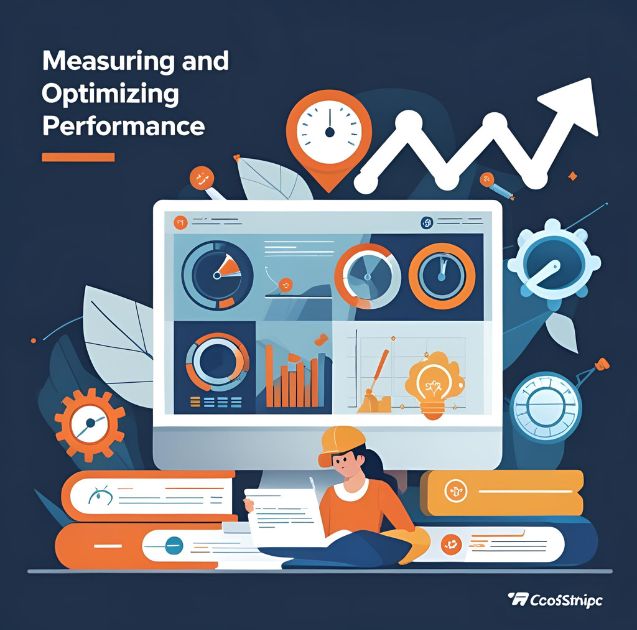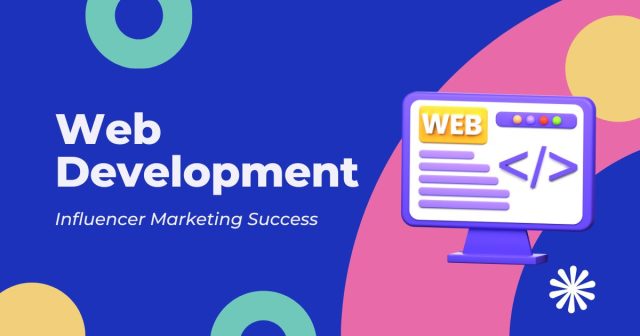The creator economy has fundamentally transformed how brands connect with their audiences. When an influencer promotes your product to their 100K followers, the last thing you want is a clunky website that loses potential customers at checkout. Yet many brands focus heavily on securing the perfect influencer partnership while neglecting the digital infrastructure needed to convert that traffic into sales.
Successful influencer marketing campaigns require more than just compelling content and authentic endorsements. Behind every viral post that drives traffic to your site lies a critical question: is your website ready to handle the influx of new visitors and convert them into customers?
The stakes are high. A single Instagram story from a mid-tier influencer can send thousands of users to your website within hours. If your site loads slowly, breaks on mobile devices, or provides a frustrating user experience, you’ve essentially paid for traffic that bounces away without converting.
This comprehensive guide explores the web development essentials that turn influencer-driven traffic into measurable business results. From technical performance optimization to user experience design, we’ll cover the foundational elements your website needs before launching your next brand activation campaign.
Understanding the Influencer Traffic Surge
Influencer marketing generates a unique type of web traffic that differs significantly from organic search or paid advertising. When a popular creator shares your brand with their audience, the resulting traffic spike is often immediate, concentrated, and highly engaged.
This surge presents both opportunities and challenges for web development teams. The opportunity lies in capturing highly qualified leads who arrive with genuine interest in your product. The challenge involves ensuring your website infrastructure can handle sudden increases in concurrent users while providing an optimal browsing experience.
Traffic from influencer campaigns tends to be mobile-heavy, with studies showing that over 80% of social media users access platforms primarily through mobile devices. This mobile-first reality demands responsive design and mobile-optimized performance as non-negotiable requirements rather than nice-to-have features.
Additionally, influencer audiences often expect seamless transitions from social content to brand websites. The context switching from an Instagram story to a product page should feel natural and frictionless, maintaining the momentum generated by the influencer’s endorsement.
Core Web Development Requirements

Site Speed and Performance Optimization
Page loading speed directly impacts conversion rates, with research showing that even one-second delays can reduce conversions by up to 7%. For influencer marketing campaigns where users arrive with high intent but limited patience, fast loading times become critical for success.
Web developers should prioritize several key performance metrics. First, optimize images through compression and modern formats like WebP, which maintain visual quality while reducing file sizes. Since influencer campaigns often drive traffic to product pages with multiple high-resolution images, this optimization can significantly improve loading times.
Second, implement lazy loading for below-the-fold content, ensuring that users see critical information immediately while less essential elements load in the background. This technique proves especially valuable for product galleries and testimonial sections common in influencer-focused landing pages.
Third, minimize HTTP requests by combining CSS and JavaScript files where possible, and leverage browser caching to improve return visit performance. While first-time visitors from influencer campaigns are the primary concern, optimizing for repeat visits helps maximize long-term value from acquired traffic.
Mobile-First Responsive Design
Given the mobile-heavy nature of social media traffic, responsive design transcends best practice to become a fundamental requirement for influencer marketing success. Your website must deliver consistent functionality and visual appeal across all device types, from smartphones to tablets to desktop computers.
Mobile-first design principles should guide the development process from the outset. Start by creating layouts that work perfectly on small screens, then progressively enhance the experience for larger displays. This approach ensures that the majority of influencer-driven traffic encounters an optimized experience.
Touch-friendly interface elements become crucial for mobile users navigating from social platforms. Buttons should be adequately sized for finger taps, form fields should be easy to select and fill, and navigation menus should be intuitive on touchscreen devices.
Consider the mobile shopping behavior patterns of social media users. Many browse and research on mobile devices but prefer completing purchases on desktop computers. Your mobile experience should facilitate easy bookmarking, wishlist creation, or account registration to capture these cross-device conversion paths.
Technical Infrastructure for Influencer Campaigns
Server Capacity and Scalability
Influencer campaigns can generate unpredictable traffic spikes that test your server infrastructure. A successful campaign might drive 10 times your normal traffic within a few hours, making scalable hosting solutions essential for maintaining site availability during peak interest periods.
Cloud hosting platforms offer auto-scaling capabilities that can automatically increase server resources during traffic surges. This elastic approach prevents site crashes during viral moments while avoiding the cost of maintaining excess capacity during normal operations.
Content Delivery Networks (CDNs) distribute your website content across multiple geographic locations, reducing loading times for users regardless of their physical distance from your primary server. For influencer campaigns targeting diverse geographic audiences, CDNs ensure consistent performance globally.
Database optimization becomes crucial when handling increased user registrations, product inquiries, or email signups generated by influencer campaigns. Proper indexing and query optimization prevent database bottlenecks that could slow down your entire website during high-traffic periods.
Analytics and Tracking Implementation
Measuring the success of influencer marketing requires sophisticated tracking capabilities built into your website’s foundation. Beyond basic page views, you need to understand user behavior, conversion paths, and engagement metrics specific to influencer-driven traffic.
UTM parameter implementation allows you to track traffic sources with granular precision. Each influencer can receive unique tracking links that identify not only which creator drove the traffic, but also which specific piece of content or platform generated the visits.
Event tracking setup enables measurement of micro-conversions that might not immediately result in sales but indicate genuine interest. These events might include email signups, product wishlist additions, or video views on your website.
Cross-device tracking becomes particularly important for influencer marketing, where users frequently discover brands on mobile social platforms but complete purchases on desktop computers. Google Analytics 4 and similar platforms offer enhanced cross-device insights that help attribute conversions accurately.
User Experience Design for Social Traffic
Landing Page Optimization
Influencer-driven traffic often arrives with specific expectations set by the creator’s content. Your landing pages should seamlessly continue the narrative established in the influencer’s post while guiding visitors toward conversion actions.
Visual consistency between the influencer’s content and your landing page helps maintain user engagement during the transition. If an influencer showcases your product in a specific lifestyle context, your landing page should reflect similar aesthetic choices and messaging approaches.
Clear value propositions become even more important for social traffic, as these visitors may be less familiar with your brand compared to organic search traffic. Within seconds of arriving, users should understand what you offer, why it matters, and how they can take the next step.
Social proof integration through customer reviews, testimonials, or user-generated content helps validate the influencer’s endorsement with additional credible voices. This layered approach to trust-building can significantly improve conversion rates for first-time visitors.
Conversion Path Optimization
The journey from influencer discovery to purchase should be as frictionless as possible. Analyze your current conversion paths to identify and eliminate potential points of friction that could derail interested prospects.
Streamlined checkout processes prove especially important for impulse purchases driven by influencer recommendations. Guest checkout options, multiple payment methods, and clear shipping information all contribute to higher conversion rates.
Form optimization reduces barriers to email capture or account creation. Minimize required fields, use smart autofill features, and provide clear privacy assurances to encourage user engagement.
Exit-intent popups specifically designed for social traffic can capture email addresses from users who aren’t ready to purchase immediately but remain interested in your brand. These tools provide second chances to convert initially hesitant visitors.
Security and Compliance Considerations
Increased traffic from influencer campaigns also brings heightened security considerations. More visitors mean more potential attack vectors, making robust security measures essential for protecting both your business and customer data.
SSL certificates ensure secure data transmission, building trust with privacy-conscious consumers arriving from social platforms. Modern browsers actively warn users about unsecured websites, making HTTPS implementation non-negotiable for conversion optimization.
GDPR and CCPA compliance become crucial when capturing personal information from influencer-driven traffic. Clear privacy policies, consent management systems, and data handling procedures protect your business while building consumer trust.
Regular security audits and updates help maintain protection against evolving threats. As your website gains visibility through influencer partnerships, it may attract more attention from malicious actors seeking to exploit vulnerabilities.
Measuring and Optimizing Performance

Key Performance Indicators
Successful influencer marketing web development requires tracking metrics that connect technical performance with business outcomes. Beyond traditional web analytics, focus on indicators that measure the complete customer journey from social discovery to conversion.
Bounce rate analysis specifically for influencer traffic helps identify whether your landing pages meet visitor expectations. High bounce rates might indicate misalignment between influencer content and website experience.
Conversion rate optimization through A/B testing different page elements, calls-to-action, or checkout processes helps maximize ROI from influencer partnerships. Small improvements in conversion rates can dramatically increase campaign profitability.
Customer lifetime value tracking for influencer-acquired customers provides insights into the long-term success of these partnerships. Some influencer audiences may convert at lower initial rates but demonstrate higher lifetime value through repeat purchases and referrals.
Continuous Improvement Process
Influencer marketing success requires ongoing optimization based on real performance data. Establish regular review cycles to analyze campaign results and identify areas for website improvement.
User feedback collection through surveys, chat tools, or direct outreach helps understand the experience from your audience’s perspective. Influencer-acquired customers often provide valuable insights about expectation gaps or conversion barriers.
Competitive analysis of how other brands optimize their websites for influencer traffic can reveal new opportunities or best practices worth implementing.
Building Long-Term Success Through Technical Excellence
The intersection of web development and influencer marketing will only grow more important as brands increase their investment in creator partnerships. Organizations that prioritize technical excellence alongside content creation will capture competitive advantages in conversion rates, customer acquisition costs, and overall campaign ROI.
Success requires treating web development as a strategic component of influencer marketing rather than a supporting afterthought. The most effective campaigns result from close collaboration between marketing teams planning influencer partnerships and development teams optimizing the digital experience.
Consider establishing dedicated landing pages or website sections specifically designed for influencer traffic. These specialized pages can incorporate unique design elements, messaging, or features that speak directly to social media audiences while maintaining your brand’s core identity.
Investment in robust analytics and testing capabilities enables continuous optimization based on real user behavior rather than assumptions. The data generated from influencer campaigns provides valuable insights that can improve your website’s performance across all traffic sources.
As the creator economy continues expanding, the brands that succeed will be those that view influencer marketing holistically, understanding that great content must be supported by equally great digital experiences. Your website isn’t just a destination for influencer traffic—it’s the foundation that transforms social media engagement into sustainable business growth.







